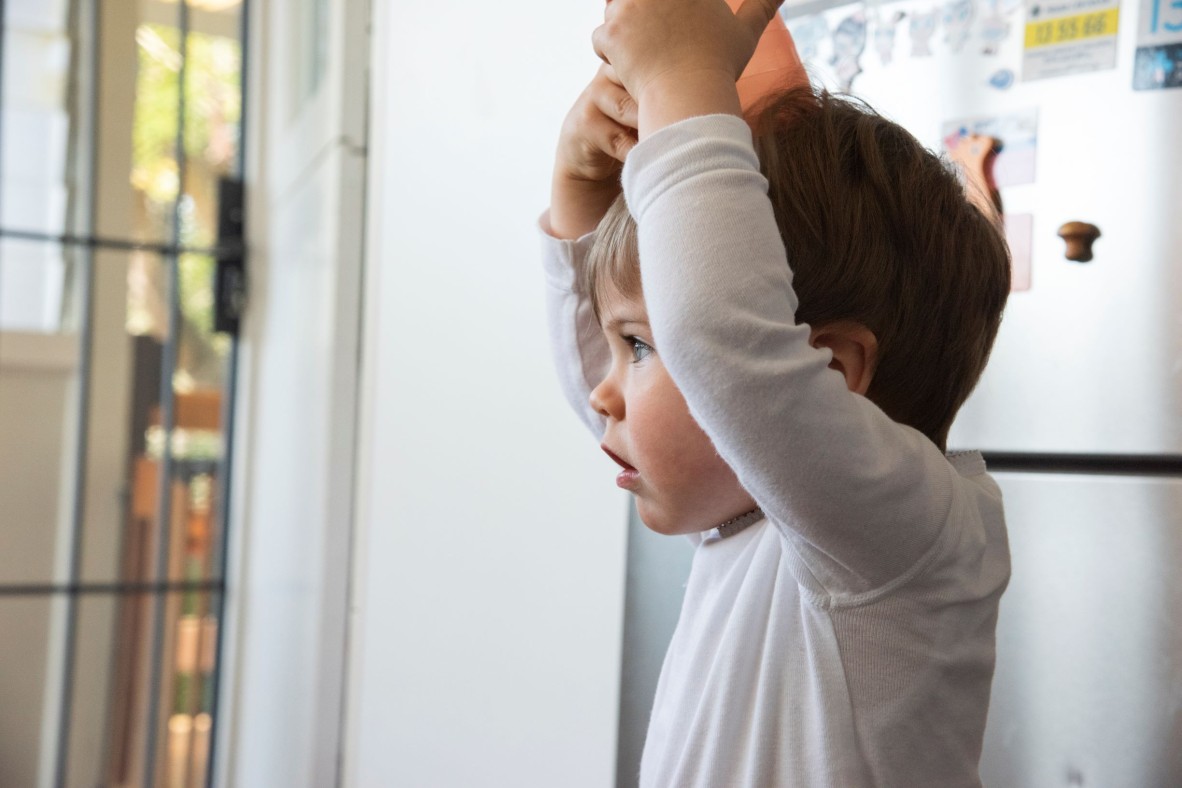
Hand-eye coordination and readiness to learn
24 February 2021 | State Library of Queensland
When young children start to learn to read and write, they'll need more than being able to see words or even understand letters and sounds. They'll also need physical development and practical skills to get a great start.
Luckily these skills are part of everyday life with your toddlers or preschoolers so make the most of these opportunities and know that you’re supporting their success.
Physical skills and being ready to start school
When children start formal schooling, they need to be able to sit for periods of time and concentrate. They also need to be able to keep a good grip on their pencil to write. All of this means they need good core strength so they can control their upper body, arms and hands.
This could be supported through painting with water on fences or concrete, bouncing balls, water play with jugs and containers or sweeping floors. Any activity where your child has to control their arms and hands supports the development of core strength – plus they are great opportunities to talk with your child about what they’re doing and how it feels.

When children get to school, they need good core strength so they can control their upper body, arms and hands and be able to sit and concentrate for periods of time.
Hand-eye coordination
Hand-eye coordination is a foundational skill that children need when they learn to read and write. It's the ability to do activities that require your hands, eyes and brain to be in sync. We use this skill every day in basic activities like being able to unlock a door with a key, and in more complex things like driving.
Eyes and hands are used to not only guide where or how a child forms letters when writing but they track the text or words of a book. You can start building this skill from birth with traditional rhymes that have actions like Incy Wincey, or Little Peter Rabbit.
Over time, with your help at first, babies will start to try to imitate your actions, and you can encourage them when you see little fingers start to twinkle. That way, you’re sharing language and practising actions again and again so that brains are getting twice the value and you both have a good time singing and playing. Keep it up when you’re both in the mood to play, and once someone’s had enough (and it could be you!) it’s time for a break!
The best thing about rhymes is they can be sung anywhere and at any time. Try singing action rhymes while you do the shopping, when you go for a walk or while you wait at the doctors.
Finger rhymes you might like to sing with your little one
Twinkle, twinkle little star
Incy wincey spider
If you’re happy and you know it
Open, shut them
Five cheeky monkeys jumping on the bed
The wheels on the bus
Dingle, dangle scarecrow
Comments
Your email address will not be published.
We welcome relevant, respectful comments.